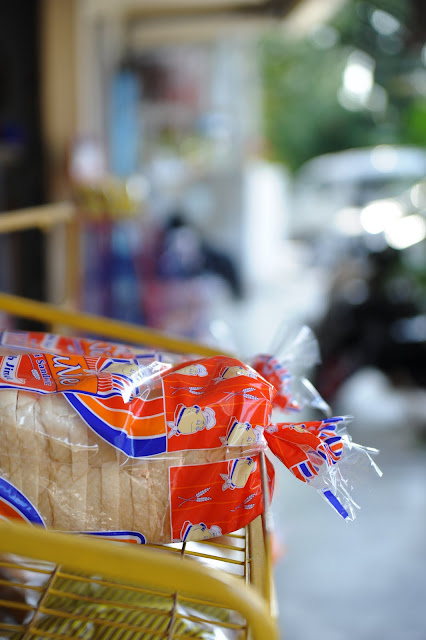So the story goes that one day, I walked into a camera shop on Elizabeth Street to try a lens. After pixel peeping the first image, I thought to myself - "Gosh, this is sharp!"
*D-lighting and High ISO noise reduction was disabled in-camera to ensure maximum detail was retained on the FX sensor.
*The unwatermarked images are uploaded as full sized files, although blogger has downsized them a little. Please respect copyright and do not upload the images to another website without prior permission
I took a few more shots, and it wasn't a dream. This lens is a gem for its price and features. Read on if you'd like to find out more.
So what is this mystery lens anyway? It's a not-so-common Tamron SP AF 28-75mm f/2.8 XR Di LD Aspherical (IF) Macro lens. (whew.. thats quite a long list of abbreviations)
IF - the front element does not rotate while focusing, so thats good news for those who're using circular polarisers.
DI - digitally integrated for both full frame and APS-C sized sensors
AF - autofocus, duh
XR - the result of using high refractive index glass has enabled tamron to produce lighter and more compact lenses. The 28-57 only weighs 500 grams and utilises a 67mm filter instead of the typical 77mm that most manufacturers use.
SP - for super performance. Hmm.. they don't exactly mention any more details, but aren't all manufacturers eager to make their lens perform as good as possible anyway? :s
Macro - although it doesn't have a magnification as good as a true macro lens, its magnification of 1:3.9 at 75mm does a very respectable job to capture some semi macro shots, as I will demonstrate later.
I've had a terrible experience with a third party lens before (a Sigma 30/1.4), and my frequent liasing with other users who use Sigma lenses has left an unpleasant opinion about third party lenses. But this Tamron lens is quite different.
The lens is made well, although you should not expect the tank-like construction of the Nikon 24-70. High quality plastics have been chosen to keep its price point affordable to consumers. The zoom and focus rings are fitted with textured rubber for a more tactile feel and are quite smooth. There is no distance scale either.
*Stay away from the focus ring while the camera is auto focusing - it may damage the lens.
Although it is of plastic construction, its made quite well. It also balances elegantly on a pro camera body. A plastic petal shaped hood is provided to keep flare from ruining your images.
Having a fast f/2.8 aperture is very useful in low light situations where you might not have access to a flash gun. The lens focuses flawlessly on the D3, although its probably just a tad slower than the Nikon 24-70 which is equipped with a silent wave motor.
And here's the good news - its 1/4th the price of a Nikon 24-70 too (well, with all the above mentioned compromises ;) To have such a lens with great image quality at a fraction of the cost is indeed a dream.

The lens performs well on APS-c sensors, giving an equivalent focal length of 42-115 mm (for Nikon). It gives very good central sharpness.
On full frame sensors, its somewhat compromised. At f2.8, it lacks a sharpness especially at the corners. If you're a pixel peeper (of if your clients are very demanding), you might find this irritable, but otherwise you can't really notice it if you don't print photos at large sizes (4R for example).

Distortion is quite well controlled for this lens, especially at its widest focal length (28mm).
As I've mentioned earlier, this is a lens with decent macro capabilities, which makes it great for food shots :)

The out of focus highlights are almost circular in nature, thanks to the use of circular aperture diaphragms. It's generally quite pleasing to the eye, although it can appear a little 'busy' at times.
In summary:
Pros:
- small (67mm filter) and light (500g vs 900g for the Nikon 24-70).
- [relatively] cheap (1/4 the cost of a Nikon 24-70, and even cheaper if you can find a mint copy)
- razor sharp at the center of the image at all focal lengths, even at maximum f/2.8 aperture.
- Good auto focus speed (although its a tad slower than Nikon's SWM)
Cons:
- Plastic, non-weathersealed construction.
- Doesn't perform well at the corners for full frame bodies. You can see the image smear a little (That's subjective of course. I notice it, but I don't really object to it).
- A little less wide than other competitors (28mm vs 24mm)
This lens is not the holy grail for full frame standard zooms, but it offers plenty for its budget-conscious users. Do give it a try if you're interested.
That's about it folks. I hope you like this mini review so far, and do email me if you have any further questions.
Other reviews:
Photozone.de - Nikon D200 and Canon 5DII


















0 Comments:
Post a Comment